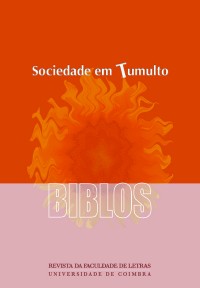Please use this identifier to cite or link to this item:
https://hdl.handle.net/10316.2/32730| Title: | Was Waltho Van Claturbank’s speech ever spoken? The fashion of London Quacks’ speeches between the seventeenth and the eighteenth centuries | Authors: | Mullini, Roberta | Keywords: | charlatães;médicos;sátira;practitioners of medicine;physicians;satire | Issue Date: | 2009 | Publisher: | Faculdade de Letras da Universidade de Coimbra | Abstract: | In the second half of the seventeenth century, irregular practitioners
of medicine were a common feature of London life, and became a social
phenomenon attacked not only by Royal College physicians, but also by
satirists in their pamphlets. This article studies a particular speech attributed to
a self-proclaimed “High German Doctor” which appeared in various and sundry
broadsides and collections of quacks’ harangues, in the light of an until now
unacknowledged source. The latter, a parody of a quack’s speech embedded in
an anonymous satirical pamphlet printed in 1676, is originally presented as a specimen of quacks’ deceitful discourse. The fact that this parody was rewritten
and expanded towards the end of the century, and that the new version was
later reprinted several times and with different illustrations, testifies not only to
English society’s favourable reception of this sort of satirical products, but also
to the continuity of quacks’ activities throughout the eighteenth century. Na segunda metade do século XVII, a vida social em Londres caracterizavase pela forte presença de charlatães que se tornaram, gradualmente, um verdadeiro fenómeno social. Este fenómeno foi frequentemente objecto dos ataques dos médicos do Royal College of Physicians e também da crítica de inúmeros escritores satíricos. O presente artigo estuda um discurso particular atribuído a um charlatão que se autodefine como “High German Doctor”, conforme as várias aparições que fez e que estão documentadas em folhas estampadas e em muitas colectâneas de arengas de charlatães, à luz de uma fonte até agora ainda não identificada. Este discurso, paródia das palavras de um charlatão incluídas num panfleto satírico anónimo imprimido em 1676, é originariamente descrito como um exemplo do falar enganador dos charlatães. O facto de esta paródia ter sido reescrita e expandida no final do século XVII, e o facto de a nova versão ter sido muitas vezes reimpressa posteriormente e acompanhada de diferentes ilustrações, atesta que, não só a sociedade inglesa acolhia favoravelmente tais produtos satíricos, como também confirma a constante presença de charlatães no século XVIII. |
URI: | https://hdl.handle.net/10316.2/32730 | ISSN: | 0870-4112 | DOI: | 10.14195/0870-4112_7_7 |
| Appears in Collections: | Biblos |
Files in This Item:
| File | Description | Size | Format | |
|---|---|---|---|---|
| biblosvii_artigo7.pdf | 3.11 MB | Adobe PDF |  |
Items in DSpace are protected by copyright, with all rights reserved, unless otherwise indicated.
